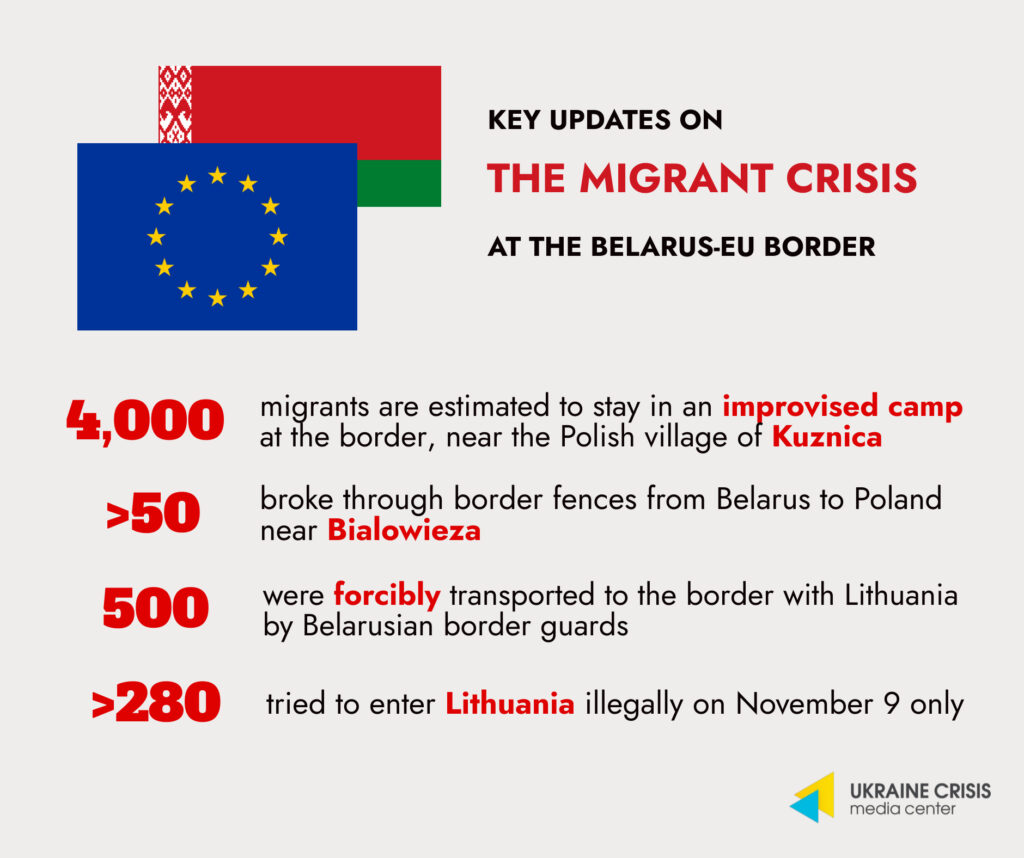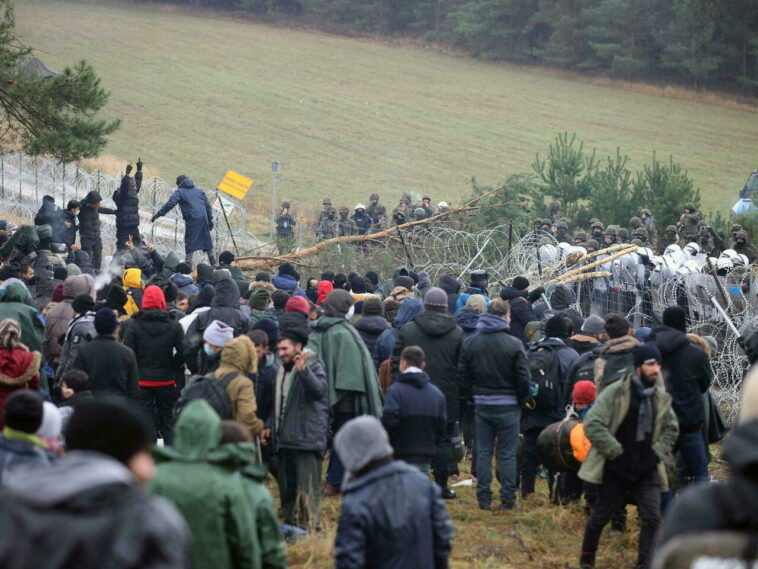On November 8, hundreds of migrants gathered at the border crossing Bruzgi-Kuźnica between Poland and Belarus. This is the largest group of migrants spotted on the Belarusian side of the border since the crisis between Belarus and its European neighbors erupted.
Belarus accused Poland of inhumanity, and the Polish Defense Ministry said it was ready to protect the border. The situation raised concerns in the EU and in Ukraine. The Centre for Strategic Communication looks at why the crisis is artificially created, what Lukashenka’s goals are, and why there are reasons to say that the mastermind is Putin. Here are the highlights from the Centre’s piece.
The Centre for Strategic Communication was established under the Ministry of Culture and Information Policy of Ukraine to combat disinformation by uniting efforts of the government and civil society. The Centre counters external threats, in particular information attacks by the Russian Federation.
Origins of the crisis: Belarus becomes migration gateway into the EU. The European Union’s 6,000-kilometer land border between Ukraine, Belarus, Moldova, Russia, and its eastern member states (Estonia, Finland, Hungary, Latvia, Lithuania, Norway, Poland, Slovakia, Bulgaria and Romania) has not been a gateway for illegal migration until recently. According to Frontex (European Border and Coast Guard Agency), the scale of illegal migration across the eastern border was much smaller than on any other migration route to the EU, accounting for less than a percent of the total.
In 2015, when the influx of refugees to European countries reached unprecedented proportions since the Second World War, 1,927 cases of illegal crossings were recorded on the eastern border. For reference: in the same year, 764,333 people illegally entered the EU via the Western Balkans, and 885,386 via the Eastern Mediterranean. Even the temporary Arctic route for illegal migration, which existed between October and December 2015, was used by about 6,000 asylum seekers, mainly from Afghanistan and Syria—three times as many as those who crossed the Eastern border throughout the entire year.
Lukashenka’s regime behind the flow of illegal migrants. This year, the situation on the EU’s eastern border has dramatically changed. In comparison with 2020, the number of illegal crossings has grown by an incredible 1407%. But it is not the total number of migrants that was impressive, since that remained quite low anyway (for instance, German police has registered 6,600 migrants who illegally arrived from the territory of Belarus, primarily in October). What is the most striking is the way in which those figures have been achieved: this channel of illegal migration has been artificially created by the regime of Belarus’ self-proclaimed president.
Migrants are brought into the country in an organized manner, promising easy further transfer to the EU, they are then taken to the Western border in large groups and forced to rush the border at gunpoint, giving them no chance to come back. Earlier on the Belarusian-Lithuanian, and now on the Belarusian-Polish border, the events resemble front-line reports: provocations, breakthroughs, skirmishes, gunshots. In this way, Lukashenko is taking revenge on neighboring EU countries for supporting the Belarusian opposition.

Read also: “Key Updates on the Migrant Crisis at the Belarus-EU Border” by UCMC’s Hybrid Warfare Analytical Group
At least 10 migrants have already died of cold and hunger in the forests on Belarus’ western borders. Propagandists of the Lukashenko regime expect more casualties and blame the Polish side in advance.
The mastermind is Putin. Lukashenka has his reasons to blackmail the EU, but acts at the behest of Putin, analysts say. Polish Prime Minister Mateusz Morawiecki accuses Putin of organizing a migration crisis on the country’s border with Belarus. “Lukashenko is the executor of the latest assault, but this assault has a sponsor who is to be found in Moscow, and this sponsor is President Putin,” said Morawiecki at an emergency debate in the Polish parliament.
Belarus would never have behaved so aggressively on the Polish border without Moscow’s consent, a clear signal of approval from Putin. It acts as Russia’s agent, believes expert on Russian military policy Jakob Hedenskog from the Swedish Defence Research Agency.
Chatham House also writes about Belarus as “another tool in Russia’s hybrid war against Western liberal democracies.”
The Atlantic Council think tank aptly calls Lukashenko Putin’s willing provocateur. He acts at his own will, but for the benefit of Moscow.
According to General Roman Polko, the former commander of the GROM special forces unit, Lukashenko is really trying to use a “human bomb” against Poland, naively believing that Europe will yield to the blackmail, lift all sanctions and possibly even provide some financial assistance to stop the flow of migrants. But at the same time, Putin is “pulling the strings.”
“Putin is constantly waging a hybrid war. He knows that he is too weak to win an open armed conflict with NATO. In addition, Russia is too dependent on Western economies to afford such a conflict,” said the general.
In fact, according to the Atlantic Council, the crisis fabricated by the Belarusian dictator mimics the tactics previously used in Russia. It refers to the 2015 migration crisis, which peaked after Russia joined the war in Syria.
Thus, the script of this political play is very similar to the one from 2015: create a crisis, blame it on the victims, and then proffer oneself as a solution. But this time, the truth is too obvious: if in 2015, Russia was not caught red-handed, the artificial nature of this current crisis is right there.
In addition, when they say that the crowd of migrants using all identical tools is “self-organized,” or that this is “a step of despair,” or “just try shooting women and children,” Ukraine knows very well what it means: a hybrid war.




